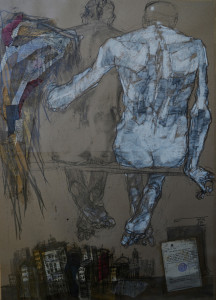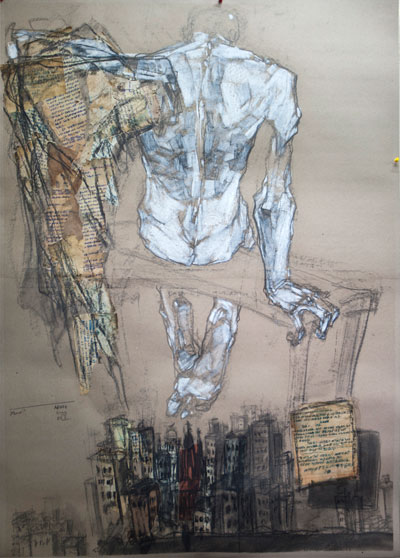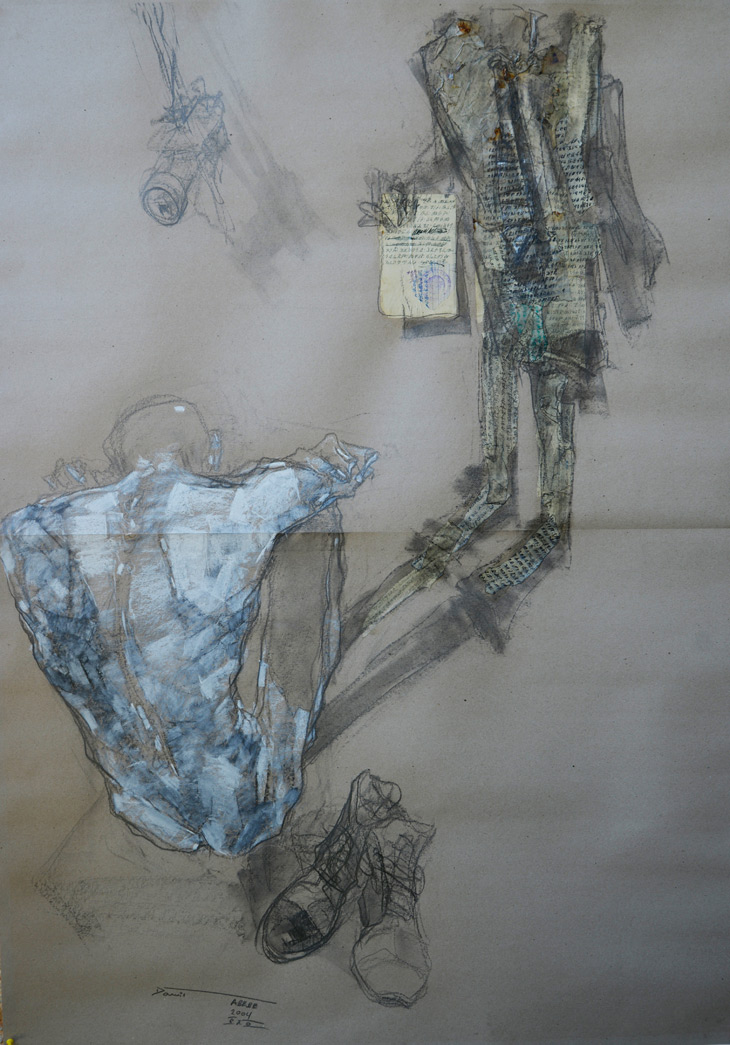
“How do these technologies affect our social life?”
Privacy 4, 2014.
About:
The work of Ethiopian artist Dawit Abebe examines belief systems, the search for knowledge, privacy, alienation, and materiality. Above all, he is interested in the impact of technology on human behaviour, as well as the impact of these technologies on the environment. In a sense, Abebe’s practice probes the realm of our shared cultural and belief systems, with technology taking on the role of an ‘other’ culture.
Privacy 5, 2014.
“My interest in this subject has been a gradual process of examination of people’s lives over the last ten years,” he explains. Abebe began to notice how social interaction has begun to move out of the public sphere and into the technological one, through computers and mobile phones, and it is this that he explores here with a series of paintings.
“I’ve seen the decrease of the ‘face to face’ social aspect,” he says. “How do these technologies affect our social life? What happens when we meet less frequently with ‘real’ people, and more often online?” Abebe also examines the impact of technology on societies, and how their introduction causes them to evolve differently.

“In rural places, such as Ethiopia, Madagascar, or Kenya, people use technology as a sign of wealth, such as owning a television. They adapt fast to new technologies, and their behaviour changes fast too.”
Privacy 1, 2011.
Dawit Abebe graduated from the Addis Ababa University School of Fine Art and Design with a diploma in painting, sculpture, graphics, photography and industrial design. Since 2001, he has been a full-time artist in residence at the Habesha Art Studio in his native Ethiopia, and has also worked with UNICEF to hold workshops for street children in Arba Minch, Jinka and Addis Ababa.
Solo exhibitions include X Privacy at the Alliance Ethio-Francaise, Addis Ababa (2012). Group shows include the touring exhibition Silver Sea Cross-Ship (2013-2014) as well as the display of the Habesha Art Collection at the National Museum in Addis Ababa (2014) along with exhibitions in France, the UAE, and the USA.



